Kitchen Project #13: Black sesame ice cream dreams
Part one! Plus a guide to food processors and blenders
Hello!
Welcome to another edition of Kitchen Projects, my recipe development journal.
It used to only be that time between Christmas and New Year that felt displaced, where days of the week seemed totally irrelevant, right?
Judging by the fact that the Lunar New Year totally blew past me and I’m now officially two days late to wish you a Happy New Year (Gong hei fat choy everybody!), this time wavy-ness seems to be my new norm. It probably explains the fact that I’m going to be sharing a recipe for Ice Cream with you in a month of ice storms and frozen pipes. I was inspired by my environment, I guess?!
In today’s edition I also give you a run down on blenders - commercial and at home - for all your paste making needs. It’s more exciting than it sounds, I swear.
As ever, thank you so much for subscribing. I’m truly grateful to share this space with you. If you’re enjoying this and have someone in mind that you think would like it too, please forward it to them.
Love
Nicola
PS. Here’s the playlist for this week. It’s a LOT of smooth tunes, just like the sesame paste. And btw, HAPPY VALENTINE’S DAY! I hope you’re feeling snuggly somewhere.
Black sesame takeover
Today we are talking all about black sesame. Black sesame paste is the earthier, nuttier cousin of tahini. And by the way, when I say ‘earthy’, I really mean earthy - it does have a certain shade of soil about it, in the best possible way. Now, if you’ve never actually tried black sesame paste and now you REALLY don’t want to since I’ve described it as tasting like an allotment, give me a chance to win you back.
My first experience with black sesame paste was in Hong Kong. My dad was born in Shanghai and he grew up in Hong Kong. When my older sisters were living in HK, we’d do the whole adult family holiday thing, meaning my sisters, mum, dad and I would regularly break off into little independent satellite teams to explore the city. Whilst my sisters and I could often be found getting a foot massage (THE BEST), my Dad could usually be found at one of his old haunts - a diner in Tsim Sha Tsui - eating all his favourite foods.
One morning we went to this old diner for breakfast and I ordered from a menu with pictures on it - two buttery crispy buns, one with condensed milk and the other with black sesame paste. It was nutty, sweet and addictive. Before I flew back to London, I loaded my suitcase with jars of the paste, even though it is pretty widely available here. I was just worried I might be separated from my new love.
So… Is there a difference between black tahini and black sesame paste?
In short: No. I mean, not really. Both are ground sesame but judging by the pastes that are available commercially, some may have added oils or sugar. Black tahini, which is available from Belazu amongst others, tends to always be pure ground sesame. Black sesame paste which you can buy from Asian supermarkets may have added sugar - perhaps in the form of honey or red bean paste. This isn’t always the case though.
I’ve felt so inspired this week - it’s been a bit manic. I feel like you can put the words ‘black sesame’ before anything and it makes it immediately more enticing. (Side note: Melissa Weller’s black sesame Kouign Amann from her brilliant book ‘A Good Bake’ have been on my ‘must cook’ list for a while.) Because of this, this black sesame adventure is going to be a two-part adventure. I’m dedicated to showing off the versatility of the paste - home-made or not - and its flavour profile. This stuff can go ANYWHERE you want.
Today, we’ll make the paste (or not, we’ll talk about that next) and I’ll show you how to make three fabulous things with it, which altogether make something totally next level.
The thing about industrial machines…
So, one of my less sociable hobbies is watching videos of food manufacturing on YouTube. From the majestic pocky factory to the ingenious ice cream cone roller (but pro tip - do not watch the hotdog one) I’m obsessed with the whole production process, gigantic machines, hairnets and all. I do believe that some things will just NEVER be the same if you try and make it at home, no matter what you try. A standard kitchen - or even a professional pastry kitchen - just doesn’t have the cavalry.
Industrial nut/seed grinders are seriously heavy duty. Known as colloid mills, nuts are ground by forcing the oils out and homogenizing the mixture under pressure at the same time. Low quality, shaky-cam video proof here of this bonafide badass machine making seriously easy work of various nuts and seeds.
Most of us just don’t have that kind of power at home. My god, do I love my Magmix. But it does struggle to process nuts and seeds at a high level/speed. Let’s go deeper.
The first attempts
If you look at the back of a tahini jar, the ingredients will usually be ‘100% sesame seeds’. I researched quite a few recipes online for the paste and almost all of them suggest using oil, honey, water or a combination of them. I decided to give it a go.
To make the paste, I started by toasting the sesame seeds in a pan - not for too long, but just until things were smelling a bit fragrant and there was an occasional pop. Still warm (essential) I transferred the sesame seeds into the food processor and ground them for a few minutes.
The sesame seeds just looked a bit like breadcrumby, poppy seedy gravel. After 10 minutes, I gave up and figured my blender just wasn’t powerful enough and started adding oil, honey and water in various quantities until the paste looked about right and tasted good.
For the next few months, I continued to jump the paste queue - I would blend my sesame paste until I reached the gravel stage and then would add oil, followed by honey (to balance the flavour) and finish with a little water until I reached the desired consistency. Although I wasn’t making a 100% sesame paste, I was making something that worked well in my recipes and was pretty quick to make. Win-win.
The no add-in attempt
When I decided to write this Kitchen Projects about black sesame paste I realised I needed to push the boundaries of my blender to see what was possible at home.
So, one sunny cold morning I did just that. I started by toasting the seeds and then I moved them into the blender, started a stopwatch, kept my infrared thermometer near by (so I could monitor the heat of the motor) and watched.
Although my machine was probably traumatised, it managed to transform the warm toasted sesame seeds into a completely beautiful fluid paste. How long did it take?
FOURTY MINUTES. Yep. Fourty five whole minutes of scraping, blending, resting, scraping, blending, resting, scraping, praying to the blender gods, more blending, more scraping etc. Although I think 40 mins gave me the full black sesame experience, you could probably stop after 25/30 mins and still be happy.
5 minutes blending - gravelly poppy seeds
25 minutes blending - almost there, but still quite thick
40 minutes blending - totally pulverised and shiny
The final temp of the machine was a seriously toasty and kind of scary 55c/60c(!). This added heat, I’m sure, accidentally aided the blending process. Whether my blender will live to see another day, I’ll have to let you know.
I can only recommend making the 100% recipe paste to you if you are willing to put your food processors life on the line in the pursuit of black sesame paste.
We can do this at home but you need time and faith in your blender. If you’re short on time or think your blender might have a heart attack, you can take a shortcut by way of add-ins. It is NOT cheating.
The results
So, is it worth making your own paste? I think YES! At least once. For me it’s always good to know where your food comes from and to understand the boundaries that home cooking has. Although the at-home paste is more achievable with the help of oil and sweeteners, it works brilliantly in desserts. You can go ahead and blend the seeds until they turn to liquid at home but I can’t guarantee results for every blender. The shop-bought black tahini is delicious and easy to use, though it is a bit expensive - one jar sets you back between £6.00 - £10.00 depending on where you get it from.
Perhaps you’re wondering if the ‘quick’ version of the sesame paste mix-ins mess with recipe formulations? I was too. That’s why I’ve tested all of the recipes with both. Although the flavour profile changes very slightly, these recipes aren’t impacted significantly by whichever you choose to use.
A guide to Blenders and food processors
The lovely Eleanor wrote to me and asked me if I could run down the different types of blenders. I agree it’s an absolute minefield out there! Although I’m not an expert, I have used a lot of the widely available commercial and at home machines so here’s the deets:
Please note these descriptions are very much based on my personal opinion/experience so if you feel strongly about one of them, let me know! I wanna know. Always prepared to become a fan.
£ = under £100
££ = £100 - £500
£££ = £500+
Thermomix
Price - £££
The Thermomix combines a high-speed blender with a heating element. It can make brittles, caramels, curds, custards and so much more (trust me, if you ever get talking to a Thermomix enthusiast then you’ll know that you can literally make a roast dinner in the thing) - you simply set a temperature and pick a speed. They are very very good pieces of kit but extremely expensive
Can it make black sesame paste? VERY likely but this is personally untested by me
Vitamix
Price - £££
Vitamix blenders are especially designed for blending liquids. They are CRAZY powerful. The Vitamix pulverises liquids mad quickly with a four-pronged mortal kombat looking blade which creates a circular vortex motions. You can’t really rely on a Vitamix to blend soft solids because things tend to clump up around the blades. Apparently, the newer models can knead dough but I can’t attest to that
That being said, it does make fairly quick work of shredding cabbage or carrots, so unless you’re planning to open a Barry’s Bootcamp, or if you’re serious juice, coleslaw or milkshake enthusiast, it may not be the right investment for you
As the vitamix is a deep jug with no removable parts, I think they are quite hard to clean if you’re not making something ultra pourable
Can it make black sesame paste? Yep but I think it would get a bit clogged around the blade
Magimix / Kenwood (at home food processors, similar styles I think)
Price - ££
I have a trusty Magimix. I was gifted to me 6 years ago and works a charm despite the praline trauma I regularly put it through. The classic food processor uses a two-bladed spinning action which is perfect for chopping and blending
Although I never use all of the attachments as much as I should, it comes with loads of different blade options. It is super reliable and can easily make cake, dough and batters too. Although I wouldn’t want anything too liquid-y sloshing around in the chamber, it’s very versatile and would do a good job on soups too. The only downside? The washing up.
Can it make black sesame paste? Definitely
Nutribullet
Price - £
My Nutribullet obsession is real. I got introduced to it when I started co-habiting with a regular protein shake drinker and have now been allocated a separate jug just for my experiments. Let’s just say roast garlic hummus isn’t the best flavour pairing for a chocolate protein shake
The Nutribullet is a powerful little blender - I’m obsessed with its efficiency and how easy it is to clean. The 4 pronged blade (similar to Vitamix) is attached to the lid. You screw the lid on, flip it over and lock it into the motor which immediately switches on. When the blending mixture is a bit thicker, I do find I need to rock the whole machine back and forth quite aggressively to get any unblended lumps to the bottom. Like the Vitamix, it’s perfect for liquids.
Can it make black sesame paste? I’m not sure. I think it *might* work but to be honest it would struggle and get clogged but you could try - I gave up in mine
Robot coupe
Price - £££
The robot coupe brand is a commercial kitchen stalwart. I remember when I first started in kitchens and I was continuously confused when I was asked to ‘use the robot’ - I thought it was some kind of Jedi dance move. Anyway, I’ve now learnt that the robot coupe brand is the go-to pro equipment for all slicing/chopping/blending needs. From juicers to graters to stick blenders, these are seriously heavy-duty machines. Probably not suitable for home use as they are BIG.
Can it make black sesame paste? Almost certainly
Spice grinder
Price - £
Spice grinders are extremely useful - little powerhouses, they make quick work of cardamom, cinnamon and all manner of spices. Coffee beans, too. They are best suited for small quantities of dry spices which are flung around the small chamber with a very fast spinning delicate looking blade - I wouldn’t dare put anything liquid in there
Can it make black sesame paste? I really think this would end in tears but I am always prepared to be proved wrong. Let me know if you try it!
Ya classic stick blender/immersion blender
Price - £
A kitchen without a stick blender is a kitchen in need of help. They are my favourite - they are a helping hand in caramels, soups, mayonnaise and they’re my favourite way to emulsify butter into curds, cremeux and other pastry applications. If you want to take your scrambled eggs and quiche mix to the next level, use an immersion blender. It properly blends up your yolks and whites and makes everything beautifully smooth, especially if you then pass it through a sieve. DO IT
Can it make black sesame paste? NO WAY.
Let’s get on with the recipes!
For today, I’m going to share three recipes for black sesame paste. Each of these are wonderful on their own but combined? Holy moly. Together, these recipes make a beautiful frozen celebration of black sesame; Rich condensed milk and black sesame no churn “ice cream” (inspired by that HK diner breakfast from all those years ago) swirled with a black sesame fudge sauce and chunks of black sesame chocolate cookie, which I adapted from the iconic ‘World Peace Cookies’ by my hero Dorie Greenspan. If you’ve never made the OG, you MUST.
As a side note, I’ll tell you all about ‘no churn’ ‘ice creams’ at some point! I spent a couple of years making ice cream, parfait and other frozen desserts so I’ll give you a little rundown on what they are, the differences and why they work. But for now, just enjoy the ease of this!
Let’s do this!
The recipes
Special equipment
Food processor/blender if you are making your own paste
Black sesame paste recipe - scale up and down as required but this will give you enough to make all the recipes below and have some extra
200g black sesame seeds
Optional add-ins for a speedy paste!
40g vegetable oil
30g honey
~50g warm water
Black sesame fudge sauce
50g black sesame paste
10g cocoa powder
2g salt
20g honey or maple syrup
50g double cream
~30g warm water
Black sesame x World Peace cookies (makes approx 300g, enough for snacks and crumbs)
60g plain flour
10g cocoa powder
¼ tsp baking soda (1g)
⅛ tsp maldon salt
55g butter
50g light brown sugar
20g caster sugar
50g dark chocolate, chopped into irregular size pieces
10g black sesame seeds
40g black sesame paste
Black sesame “ice cream” - with all the other bits, this fills approx 3/4 of a 1L container
60g black sesame paste
200g condensed milk
240g double cream
2g Maldon salt
Black sesame paste method - scroll up for blending GIFs
Toast sesame seeds in a pan for around 2-3 mins on a medium heat. The seeds should pop slightly and it should smell fragrant
With add-ins:
Transfer to a food processor and blend for 5 minutes until the seeds resemble poppy seed gravel and the mix is slightly clumpy
With the motor running, pour in the vegetable oil and blend until the mixture is a loose oily paste
Next pour in the honey with the motor running
Scrape down the side of the mixing bowl
Finally pour in the warm water - go slowly and add until you reach the texture you like. I like it scoop/spoonable
Solo:
Transfer to a food processor and blend for 25 - 40 mins in approx. 5 minute instalments, regularly scraping down the bowl and letting the motor relax for 1 minute at a time during the breaks. After 25 mins you will likely have a useable but thick paste. You can stop here if you like or you can really tempt fate and go the whole hog
Black sesame fudge sauce method
Warm the cream in a pan
Once simmering, whisk in the black sesame paste and honey/maple, followed by the cocoa powder and salt
Finally whisk in the water - depending on your black sesame paste, you may want to add a little more. You want it to have a nice loose consistency - you need to be able to drizzle it whilst warm
Sauce will keep in the fridge for 5 days - it will become quite firm - like a piping consistency - in the fridge so you can re-warm it to pour on ice cream. Or, if you’re lazy like me, just whisk in a teaspoon or so of boiling water til it becomes fluid
Black sesame x World Peace cookies
For these you can bake it as a crumb (but make sure it doesn’t burn!) or simply follow the instructions to bake them all as cookies and then just crumble up what you need if you decide to make the ice cream.
Please check back to the web version to see more GIFs - I ran out of space!
Cream butter and sugars until creamy looking but not too fluffy - you don’t need to aerate it hugely
Stir through flour, baking soda and cocoa powder
Next stir through the black sesame paste, followed by the seeds and chocolate chunks
For cookies:
Roll into a log approx 1.5 - 2 inches wide and smooth the edges as you wrap it in either cling film or baking paper
Refrigerate for at least 3 hours - the longer you refrigerate them, the less they will spread in the oven. Cookies baked same day - in my experience - seem to spread and crackle a LOT
Slice into ½ inch thick rounds. Press it together if it cracks. Leave at leas5 1.5 inch space in between the cookies because they do spread a bit!
For crumbs:
Crumble the dough on a sheet
Refrigerate for 1 hour or freeze for 10 mins to firm the dough up
Pre-heat oven to 150c (the original temp was 160c but I found mine cooked too quickly!)
Bake for 8 mins (crumbs), 10-12 minutes (cookies)
The cookies may not look done but I promise they are - Trust Dorie - she knows. If they have spread out quite a lot during baking, you can nudge them back into shape whilst warm with the back of a spoon
Allow to cool before eating
Black sesame no churn “ice cream”
Whisk condensed milk with black sesame paste and salt. Set aside
Whip double cream to soft peaks - you want it to be at least thick enough for it to fall back on itself in thick ribbons. Cream does over-whip quite easily so if you do go into that territory you can just fold in a un-whipped cream - this can help mask all sorts of sins
Fold the two mixes together gently. You can make this easier by first whisking in a little of the cream to the condensed milk/sesame paste mix
Pour directly into a container
OR, if you want to mix everything together, divide the mix into thirds (mentally) and start layering it up:
Ice cream
Sauce, dotted around then swirled with a toothpick or something thin
Sprinkle of cookie chunks
Ice cream
Sauce, dotted around then swirled with a toothpick or something thin
Sprinkle of cookie chunks
Ice cream
Sauce, dotted around then swirled with a toothpick or something thin
Sprinkle of cookie chunks
Freeze for at least 3 hours until firm. Take out 10 minutes before you want to eat it and then SCOOP AWAY, adding more sauce or black sesame paste on top for extra joy. Congrats!
See you next week for more black sesame magic. Make sure choux are ready y’all. wink wink.





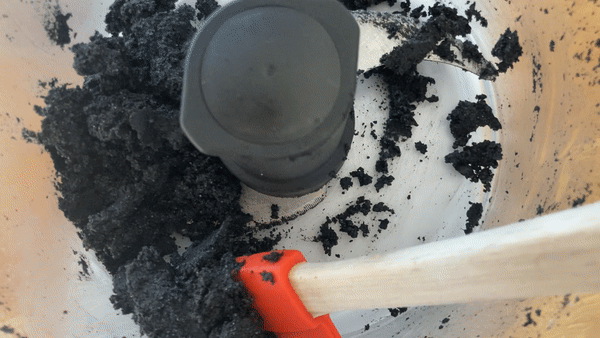
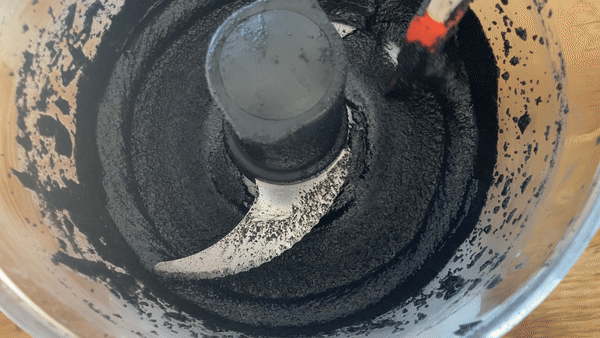
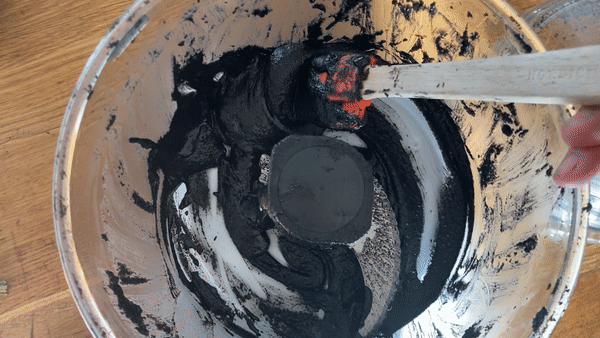

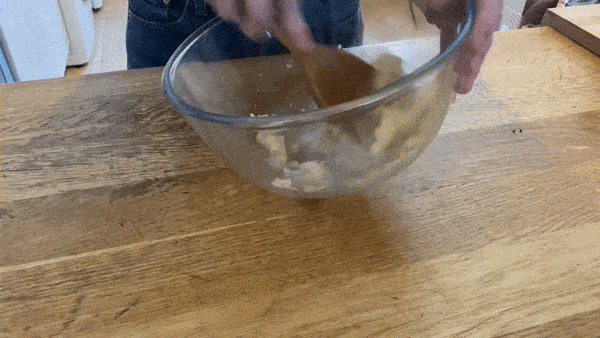

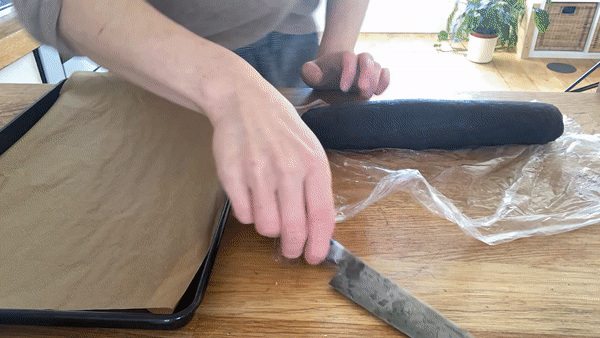

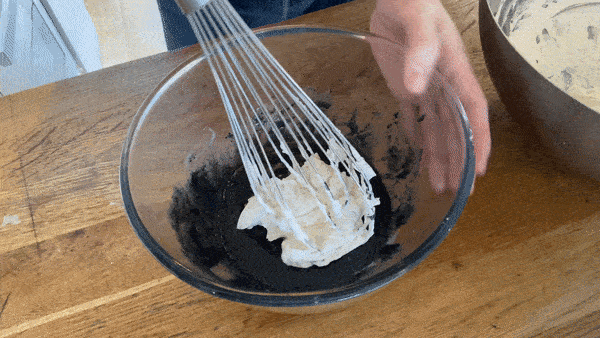
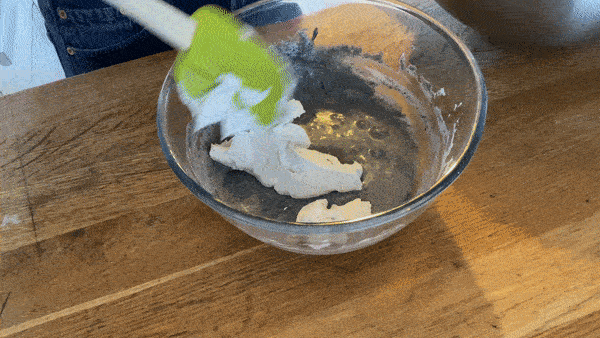
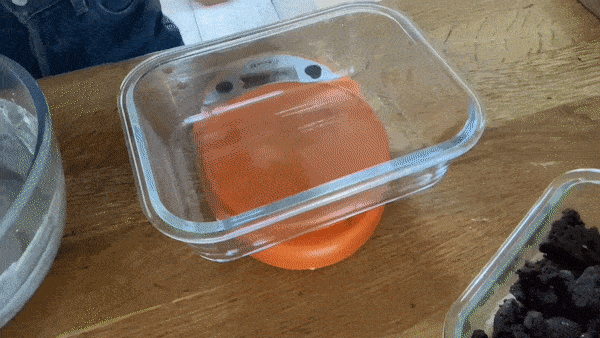
I love black sesame paste! Massive thank you for all the work you put in these newsletters! I don't know if it will work with sesame, but I have made almond paste with a spice grinder before.
Hi Nicola, Thank you for sharing this black sesame magic. We’ve tried the choux with the black sesame craquelin so far and the black sesame custard sauce. Delicious! Giving the ice cream a try this weekend. I’ve just prepared the fudge sauce and it is very salty. Would that be on purpose? Many many thanks for sharing your skills and your ideas. And thank you for your book. Sylvie